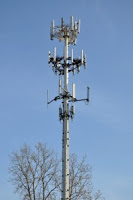 |
| Image credit: Joe Ravi under CC-BY-SA 3.0 |
Madison Ruppert, Contributor
Activist Post
Questions about the legality of the secretive cell phone surveillance tool known as “Stingray” are being raised as the use of the device, originally billed as a counterterrorism tool, expands into everything but cases related to terrorism.
Unfortunately this is just one of many methods of surveillance – all of which are increasing dramatically – used by the government, law enforcement and even the private sector.
The Electronic Frontier Foundation (EFF) called Stingrays “the biggest technological threat to cell phone privacy you don’t know about” and “an unconstitutional, all-you-can-eat data buffet” in October of last year and unfortunately it has only become more important since then.
The Stingray essentially dupes cell phones into treating the device as if it were a real cell phone tower, thus allowing “the government to electronically search large areas for a particular cell phone’s signal—sucking down data on potentially thousands of innocent people along the way,” as the EFF puts it.
The major problem is that law enforcement has used them while circumventing the need for individualized warrants as the Constitution requires.
Since this is dragnet surveillance, anyone and everyone can be targeted by the device without a warrant being issued for the search and seizure of their data.
In late January, LA Weekly reported that Stingray while “intended to fight terrorism, was used in far more routine LAPD criminal investigations 21 times in a four-month period during 2012, apparently without the courts’ knowledge that the technology probes the lives of non-suspects who happen to be in the same neighborhood as suspected terrorists.”
The Los Angeles Police Department (LAPD) was able to purchase their device thanks to a 2006 grant from the Department of Homeland Security (DHS). Keep in mind, DHS funds many highly troublesome surveillance efforts around the nation.
While the original grant request from the LAPD claimed they would be using the Stingray for “regional terrorism investigations,” they’ve been using it for everything from drug cases to burglary and murder cases.
“Of course, we’ve seen this pattern over and over and over,” the EFF points out. “The government uses ‘terrorism’ as a catalyst to gain some powerful new surveillance tool or ability, and then turns around and uses it on ordinary citizens, severely infringing on their civil liberties in the process.”
As previously mentioned, the biggest problem with Stingrays is the lack of a specific warrant issued for an individual, instead, it essentially gives police “general warrant” powers.
 Blocking general warrant powers was exactly what the founding fathers had in mind when drafting the Fourth Amendment since, as the EFF rightly notes, “In pre-revolutionary America, British soldiers used ‘general warrants’ as authority to go house-to-house in a particular neighborhood, looking for whatever they please, without specifying an individual or place to be searched.”
Blocking general warrant powers was exactly what the founding fathers had in mind when drafting the Fourth Amendment since, as the EFF rightly notes, “In pre-revolutionary America, British soldiers used ‘general warrants’ as authority to go house-to-house in a particular neighborhood, looking for whatever they please, without specifying an individual or place to be searched.”
Instead of obtaining a warrant for a specific individual’s cell phone data, the Stingray acts as the “digital equivalent of the pre-revolutionary British soldier” by allowing police to simply “point a cell phone signal into all the houses in a particular neighborhood, searching for one target while sucking up everyone else’s location along with it. With one search the police could potentially invade countless private residences at once.”
The EFF isn’t the only group questioning these devices. The Electronic Privacy Information Center (EPIC) obtained a paltry two FBI documents (see here and here) on Stingrays (out of an estimated 25,000) as part of their Freedom of Information Act lawsuit attempting to uncover more information on the use of Stingrays.
The documents, which are unsurprisingly heavily redacted, reveal that even within the government itself there are concerns that the use of Stingrays may in fact be in violation of a prohibition of interference with communications signals in a section of the Communications Act.
This demonstrates that “there are clearly concerns, even within the agency, that the use of Stingray technology might be inconsistent with current regulations,” EPIC attorney Alan Butler told Slate. “I don’t know how the [Department of Justice] justifies the use of Stingrays given the limitations of the Communications Act prohibition.”
The FBI declined to comment on the specifics of the legality or illegality of Stingrays since it remains in litigation. However, FBI spokesman Christopher Allan told Slate’s Ryan Gallagher by email that “in general the FBI cautions against drawing conclusions from redacted FOIA documents.”
Perhaps most disturbing of all revealed in the documents is that they “disclose that the feds have procedures in place for loaning electronic surveillance devices (like the Stingray) to state police. This suggests the technology may have been used in cases across the United States, in line with a stellar investigation by LA Weekly last year, which reported that state cops in California, Florida, Texas, and Arizona had obtained Stingrays,” writes Gallagher.
Some of the questions surrounding Stingrays and the information obtained through their use may be answered on March 28th.
Both the EFF and American Civil Liberties Union submitted an amicus brief in the case, United States v. Rigmaiden, and the March hearing will address if evidence obtained by using a Stingray should be suppressed.
“It will be one of the first times a judge will rules on the constitutionality of these devices in federal court,” writes the EFF.
The EFF urges local and federal law enforcement agencies alike to come clean about the Stingray technology and how they are using it before even more innocent people have their Fourth Amendment rights violated.
Did I forget anything or miss any errors? Would you like to make me aware of a story or subject to cover? Or perhaps you want to bring your writing to a wider audience? Feel free to contact me at admin@EndtheLie.com with your concerns, tips, questions, original writings, insults or just about anything that may strike your fancy.
Please support our work and help us start to pay contributors by doing your shopping through our Amazon link or check out some must-have products at our store.
This article first appeared at End the Lie.
Madison Ruppert is the Editor and Owner-Operator of the alternative news and analysis database End The Lie and has no affiliation with any NGO, political party, economic school, or other organization/cause. He is available for podcast and radio interviews. Madison also now has his own radio show on UCYTV Monday nights 7 PM – 9 PM PT/10 PM – 12 AM ET. Show page link here: http://UCY.TV/EndtheLie. If you have questions, comments, or corrections feel free to contact him at admin@EndtheLie.com
linkwithin_text=’Related Articles:’


Be the first to comment on "Legality questioned as secretive ‘Stingray’ cell phone surveillance tool used more frequently"